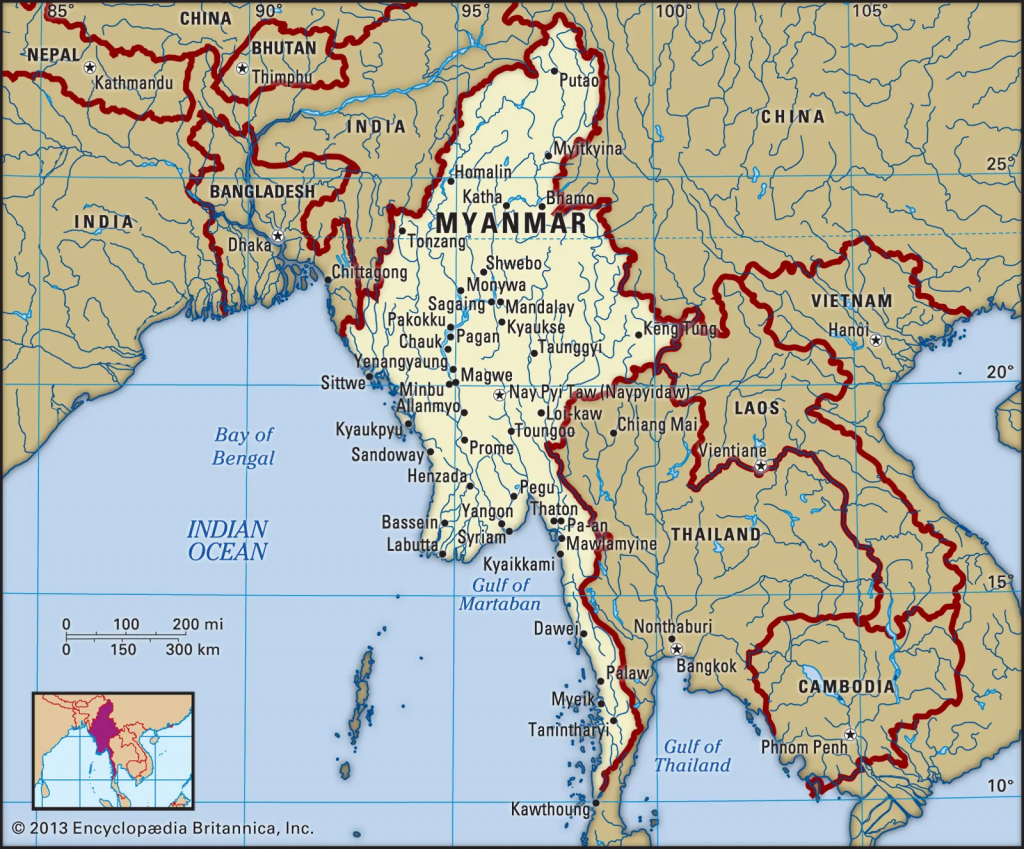Burma, or Myanmar as it is known today, has a history stretching back thousands of years. From prehistoric settlements along the Irrawaddy River to mighty feudal kingdoms, the country has been a cultural and political crossroads between India and China. Let’s embark on an exciting journey through Burma’s ancient past and explore the fascinating rise and fall of its greatest kingdoms.

The Dawn of Civilization in Burma
Long before Burma’s famous golden pagodas, the region was home to prehistoric hunter-gatherers. Archaeological evidence suggests that humans lived along the Irrawaddy River as early as 10,000 years ago. By the 1st century AD, various local kingdoms emerged, supported by advanced agricultural techniques and vibrant trade routes.
The Rise of the Pyu City-States
One of Burma’s earliest civilizations, the Pyu city-states, flourished around the 2nd century AD. These city-states, located in Upper Burma, controlled trade between India and China. The Chinese historian Ban Gu mentioned them in the Book of Han, referring to the Pyu as the kingdom of “Shanli.” The Pyu were known for their Buddhist culture, extensive irrigation systems, and urban planning. However, by the 9th century, they fell to the advancing Burmese people.
The Birth of the Pagan Empire (849-1287)
The Burmese people established their first great kingdom in 849, founding the city of Pagan (Bagan). In 1044, King Anawrahta ascended the throne and launched military campaigns to unify the region. After defeating the Mon kingdom of Thaton in 1057, he embraced Theravāda Buddhism and made it the state religion, shaping Burmese culture for centuries to come. At its height, Pagan boasted over 10,000 Buddhist temples, many of which still stand today as breathtaking ruins.
However, in the late 13th century, the mighty Mongol Empire, led by Kublai Khan, invaded Pagan. By 1287, the once-powerful kingdom collapsed, leaving Burma in political turmoil.
A Fractured Land: The Ava and Pegu Kingdoms (14th-16th Century)
Following Pagan’s fall, Burma was divided into rival states. The Kingdom of Ava controlled Upper Burma, while the Mon-controlled Pegu dominated the south. During this period, Burma saw frequent warfare, shifting alliances, and cultural exchanges with China and Thailand.
One of the most significant conflicts was the Forty Years’ War (1385-1424) between Ava and Pegu. Though Ava initially held the upper hand, its power waned after the death of Crown Prince Minye Kyawswa in 1416. By the early 16th century, Burma remained fragmented, setting the stage for the rise of a new, powerful dynasty.
The Toungoo Dynasty: Burma’s Golden Age (1531-1752)
In 1531, a charismatic warrior named Tabinshwehti unified much of Burma under the Toungoo Dynasty. His successor, Bayinnaung (r. 1550-1581), expanded Burmese rule beyond its borders, conquering Siam (Thailand) and the Shan States. For a brief moment, Burma was the most powerful kingdom in Southeast Asia.
However, after Bayinnaung’s death, internal rebellions and external threats weakened the empire. By 1752, the Mon people seized the Burmese capital, Ava, bringing an end to the Toungoo Dynasty.
The Konbaung Dynasty and the Rise of Colonialism (1752-1885)
The last great Burmese dynasty, the Konbaung, was founded by King Alaungpaya in 1752. He reconquered Lower Burma and repelled invasions from Siam and China. The dynasty reached its peak under King Bodawpaya, who expanded Burmese rule into present-day India.
However, Burma’s expansion brought it into conflict with the British Empire. Following three Anglo-Burmese Wars, the British annexed the entire country in 1885, marking the end of Burma’s royal era and the beginning of colonial rule.
Legacy and Modern Relevance
Burma’s ancient kingdoms shaped its culture, religion, and identity. The legacy of the Pagan Empire lives on in the thousands of temples that still dot the landscape. The Toungoo Dynasty’s conquests influenced regional politics for centuries, while the Konbaung kings left behind a rich literary and artistic heritage.
Today, Myanmar continues to embrace its history, preserving its architectural wonders and celebrating its diverse ethnic traditions. As the country navigates modern challenges, its past serves as a reminder of resilience, unity, and the enduring power of culture.

No comments yet.